The Choice of the Optimal Number of Discs in an MR Clutch from the Viewpoint of Different Criteria and Constraints
Abstract
1. Introduction
2. Materials and Methods
2.1. Assumptions that Must Be Fulfilled by the Compared Clutches with the Number of Discs N = 1,2,3,4
- The thickness of the MR fluid gap g is assumed the same ( mm);
- Excitation current I is assumed the same ( 0.6 A);
- Allowable stress is assumed the same Pa. Usually the designer introduces an additional safety factor by which the given value of the clutching torque is multiplied to determine the shaft radius ensuring the appropriate level of safety;
- Safety factor for shaft is assumed the same ;
- It is assumed that discs and yokes are made of the same magnetic steel;
- Maximum magnetic field density is kept the same in spite of variations in the geometries of clutches. The most saturated point lies within the cover yoke at a length approximately equal to the external radius of the primary member discs [18,19] (we assumed a value of 1.2 T located at the knee of the B-H curve for magnetic steel, which is remarkably less than the saturation point 1.6 T);
2.2. Brief Description of the Applied Analytical-Field Design Method and Obtained Constructional Data for the Considered Variants
3. Results
3.1. Results of Comparative Study for the MR Clutches Nm with Number of Discs N = 1,2,3,4
3.2. Detailed Analysis of the Case: Nm and Physical Explanation of the Obtained Results
4. Discussion
Author Contributions
Funding
Institutional Review Board Statement
Informed Consent Statement
Data Availability Statement
Conflicts of Interest
Sample Availability
Abbreviations
| MR clutches | Magnetorheological clutches |
References
- Chen, J.Z.; Liao, W.H. Design, testing and control of a magnetorheological actuator for assistive knee braces. Smart Mater. Struct. 2010, 19, 035029. [Google Scholar] [CrossRef]
- Kciuk, M.; Chwastek, K.; Kluszczyński, K.; Szczygłowski, J. A study on hysteresis behaviour of SMA linear actuators based on unipolar sigmoid and hyperbolic tangent functions. Sens. Actuators A Phys. 2016, 243, 52–58. [Google Scholar] [CrossRef]
- Kim, K.J.; Lee, C.W.; Koo, J.H. Design and modelling of semi-active squeeze film dampers using magneto-rheological fluids. Smart Mater. Struct. 2008, 17, 035006. [Google Scholar] [CrossRef]
- Martynowicz, P. Study of Vibration Control Using Laboratory Test Rig of Wind Turbine Tower-Nacelle System with MR Damper Based Tuned Vibration Absorber. Bull. Pol. Acad. Sci. Tech. Sci. 2016, 64, 347–359. [Google Scholar] [CrossRef]
- Rossa, C.; Jaegy, A.; Lozada, J.; Micaelli, A. Design Considerations for Magnetorheological Brakes. Trans. Mechatronics 2014, 19, 1669–1680. [Google Scholar] [CrossRef]
- Nguyen, Q.H.; Choi, S.B. Selection of magnetorheological brake types via optimal design considering maximum torque and constrained volume. Smart Mater. Struct. 2011, 21, 015012. [Google Scholar] [CrossRef]
- Li, W.H.; Du, H. Design and Experimental Evaluation of a Magnetorheological Brake. Int. J. Adv. Manuf. Technol. 2003, 21, 508–515. [Google Scholar] [CrossRef]
- Rizzo, R.; Musolino, A.; Bucchi, F.; Forte, P.; Frendo, F. Magnetic FEM Design and Experimental Validation of an Innovative Fail-Safe Magnetorheological Clutch Excited by Permanent Magnets. IEEE Trans. Energy Convers. 2014, 29, 628–640. [Google Scholar] [CrossRef]
- Karakoc, K.; Park, E.J.; Suleman, A. Design considerations for an automotive magnetorheological brake. Mechatronics 2008, 18, 434–447. [Google Scholar] [CrossRef]
- East, W.; Turcotte, J.; Plante, J.-S.; Julio, G. Experimental assessment of a linear actuator driven by magnetorheological clutches for automotive active suspensions. J. Intell. Mater. Syst. Struct. 2021, 32, 955–970. [Google Scholar] [CrossRef] [PubMed]
- Park, E.J.; Falcao, L.; Suleman, A. Multidisciplinary design optimization of an automotive magnetorheological brake design. Comput. Struct. 2008, 28, 207–216. [Google Scholar] [CrossRef]
- Sohn, J.W.; Jeon, J.; Nguyen, Q.H.; Seung-Bok, C. Optimal design of disc-type magneto-rheological brake for mid-sized motorcycle: Experimental evaluation. Smart Mater. Struct. 2015, 24, 85–109. [Google Scholar] [CrossRef]
- Horváth, B.; Szalai, I. Nonlinear Magnetic Properties of Magnetic Fluids for Automotive Applications. Hung. J. Ind. Chem. 2020, 48, 61–65. [Google Scholar] [CrossRef]
- Chen, G.; Lou, Y.; Shang, T. Mathematic Modeling and Optimal Design of a Magneto-Rheological Clutch for the Compliant Actuator in Physical Robot Interactions. IEEE Robot. Autom. Lett. 2019, 4, 3625–3632. [Google Scholar] [CrossRef]
- Standard Specification for Standard Nominal Diameters and Cross-Sectional Areas of AWG Sizes of Solid Round Wires Used as Electrical Conductors, ASTM International. 2014. Available online: http://www.astm.org/Standards/B258.htm (accessed on 1 August 2021).
- Lord Corporation Product Bulletins. Available online: https://lordfulfillment.com/pdf/44/DS7012_MRF-140CGMRFluid.pdf (accessed on 1 August 2021).
- Nguyen, Q.H.; Choi, S.B. Optimal design of an automotive magnetorheological brake considering geometric dimensions and zero-field friction heat. Smart Mater. Struct. 2010, 19, 11. [Google Scholar] [CrossRef]
- Kluszczyński, K.; Pilch, Z. MR multi disc clutches—Construction, parameters and field model. In Proceedings of the 20th International Conference on Research and Education in Mechatronics (REM), Wels, Austria, 23–24 May 2019. [Google Scholar] [CrossRef]
- Kluszczyński, K.; Pilch, Z. Basic features of MR clutches-resulting from different number of discs. In Proceedings of the 2019 15th Selected Issues of Electrical Engineering and Electronics (WZEE), Zakopane, Poland, 8–10 December 2019. [Google Scholar] [CrossRef]
- Available online: http://www.agros2d.org/ (accessed on 1 August 2021).
- Kowol, P.; Pilch, Z. Analysis of the magnetorheological clutch working at full slip state. Electr. Rev. 2015, 91, 108–111. [Google Scholar] [CrossRef][Green Version]
- Kluszczyński, K.; Pilch, Z. Integrated analytical-field design method of multi-disc magnetorheological clutches for automotive applications. Bull. Pol. Acad. Sci. Tech. Sci. 2021. in print. [Google Scholar]
- Pilch, Z. Analysis of Established Thermal Conditions. In Analysis and Simulation of Electrical and Computer Systems; Springer International Publishing: Berlin/Heidelberg, Germany, 2015; pp. 197–213. [Google Scholar] [CrossRef]

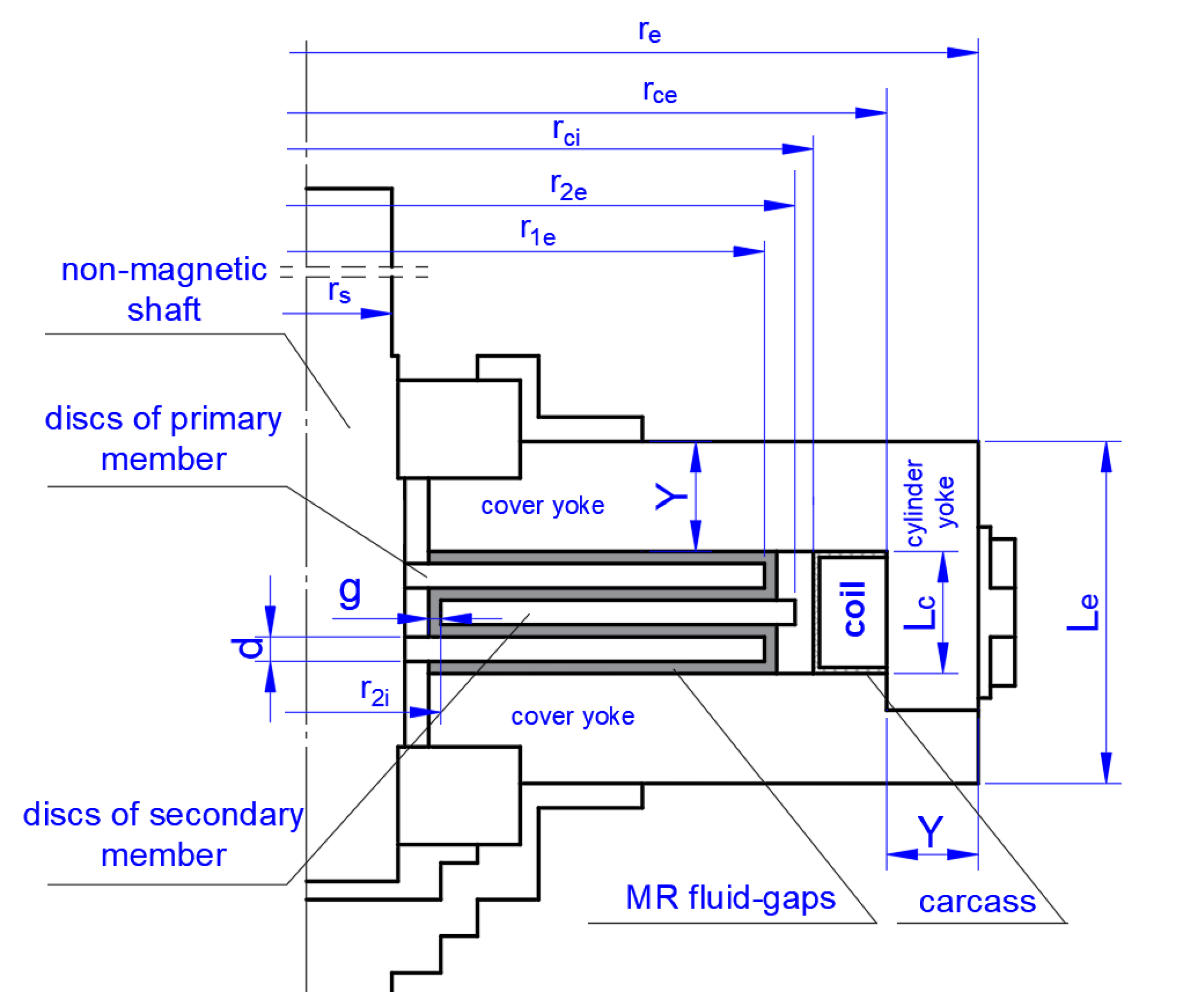
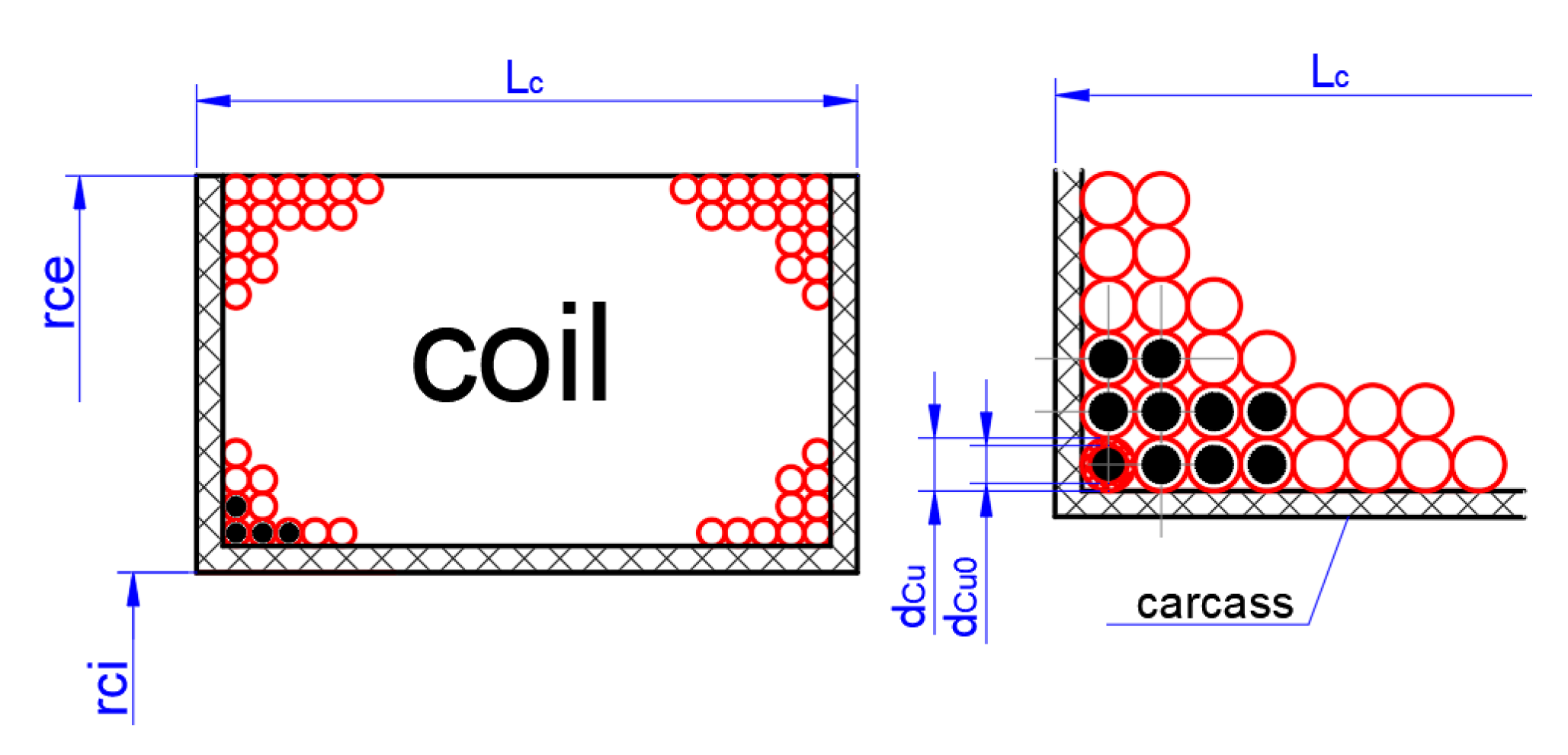
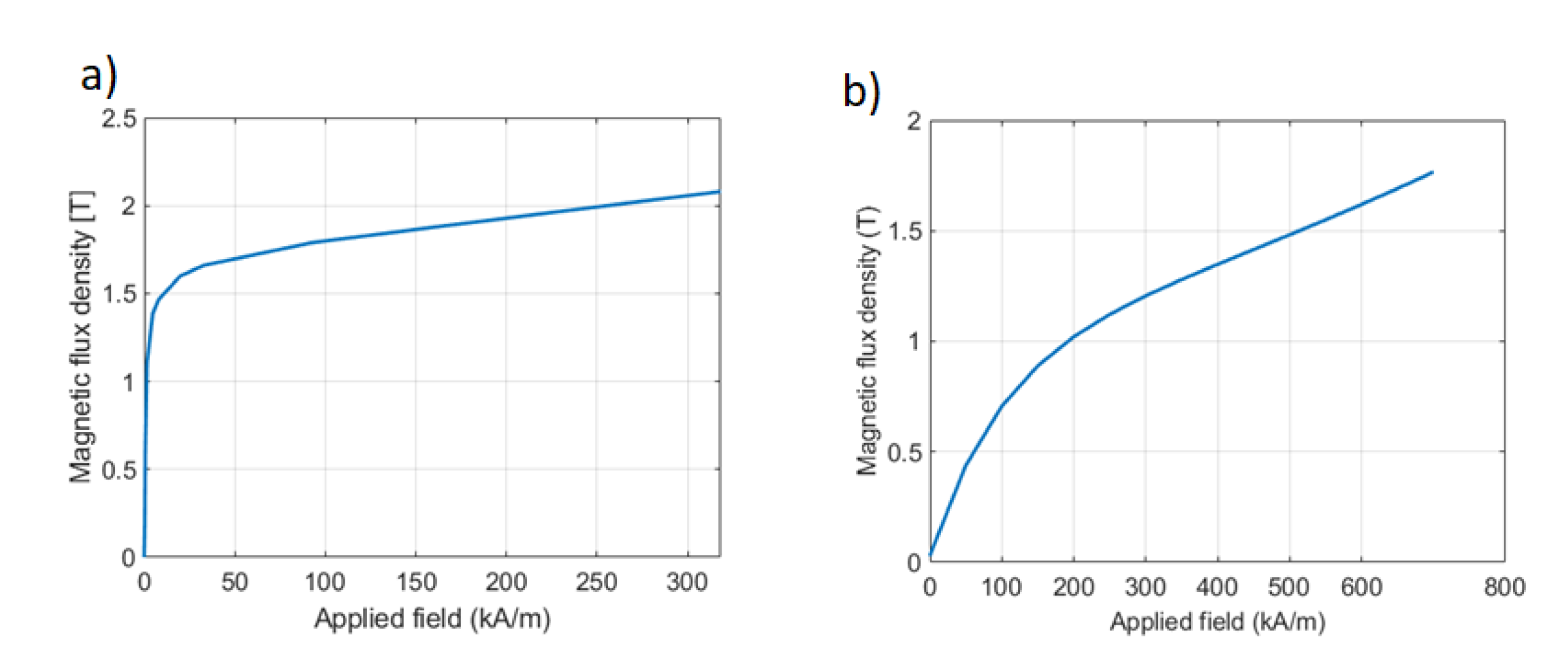
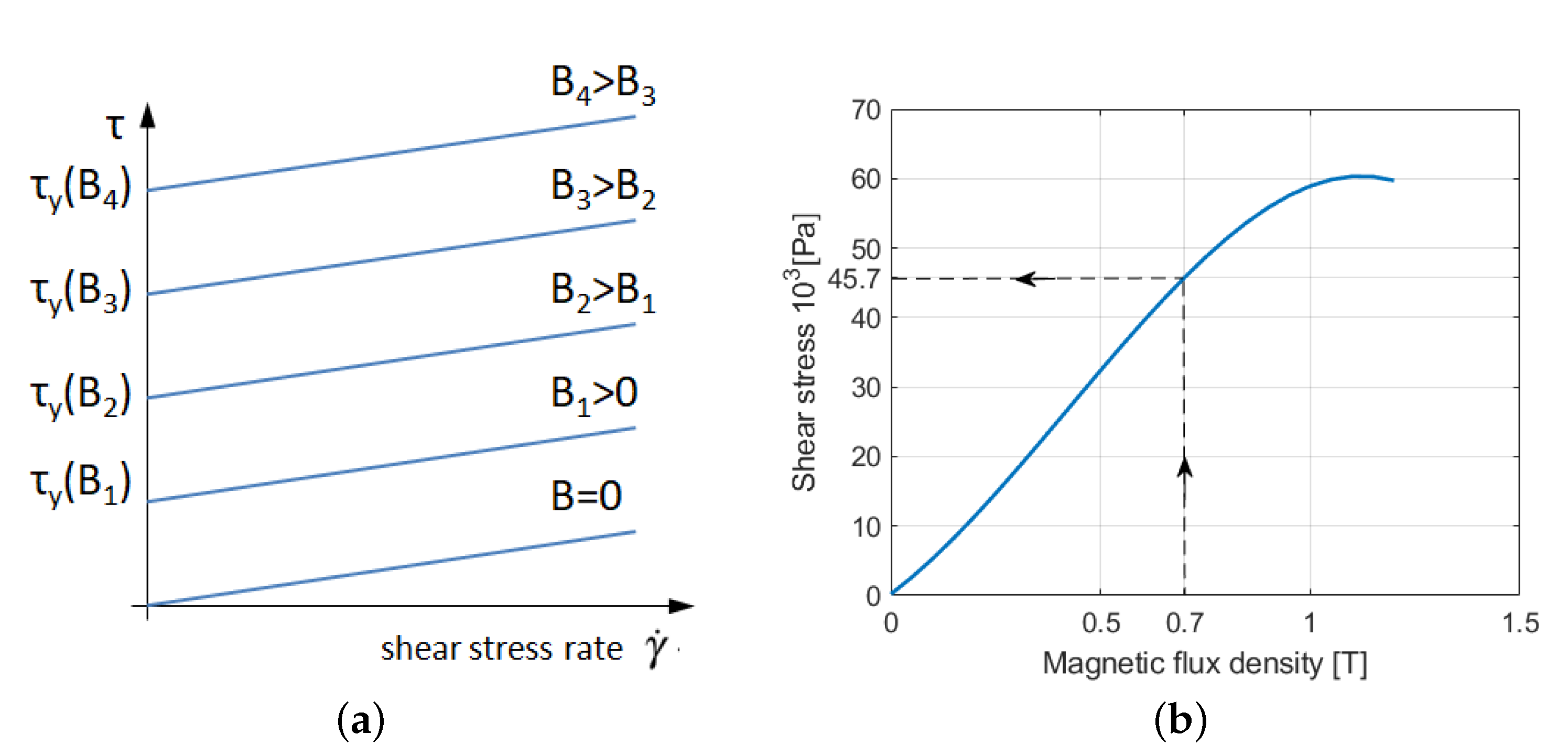
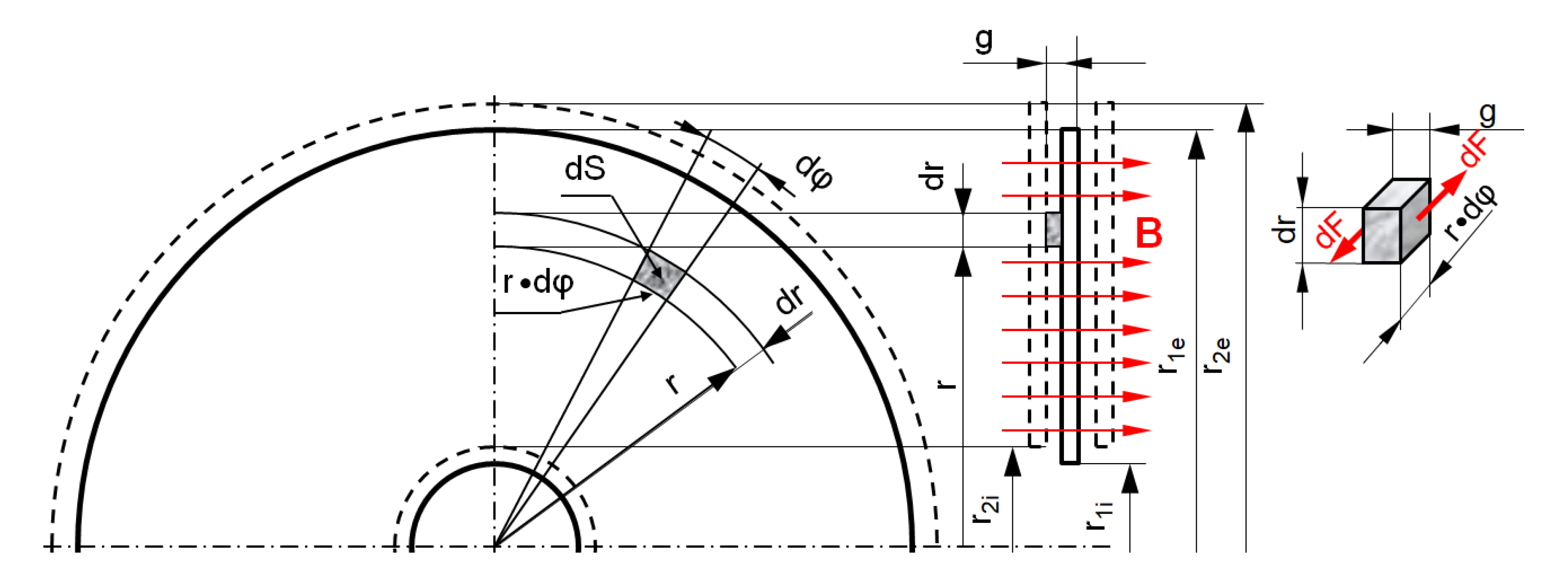
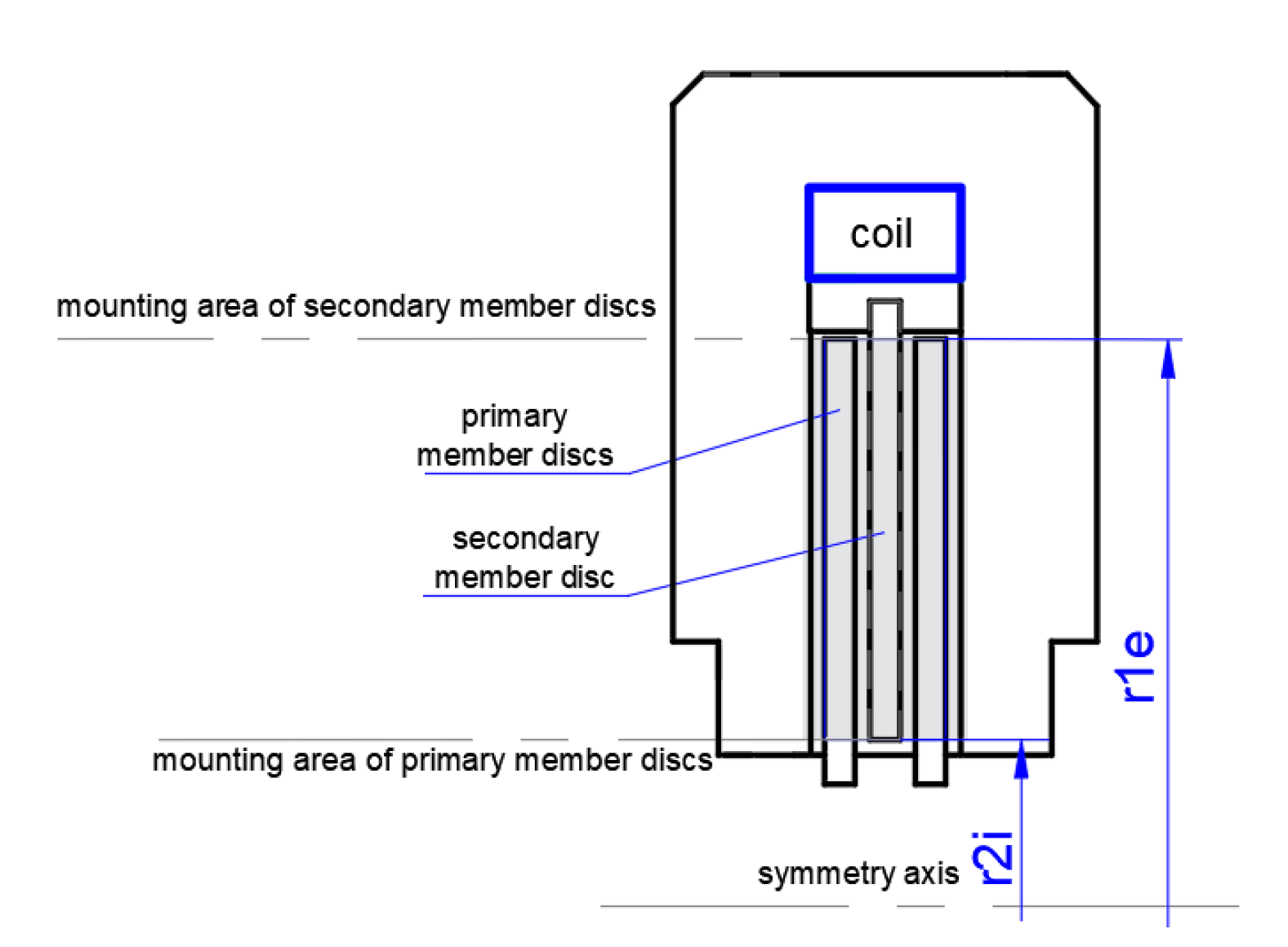

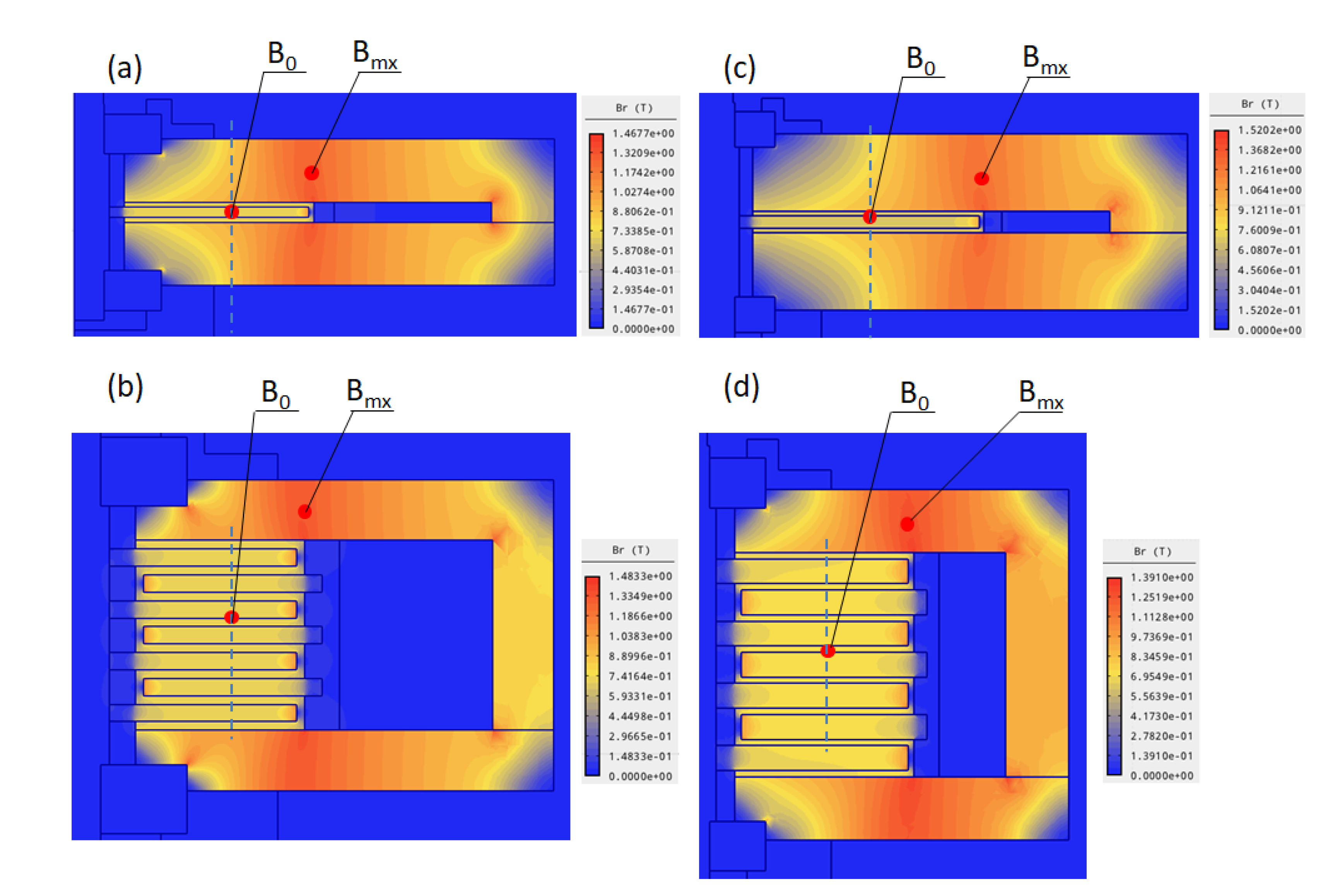
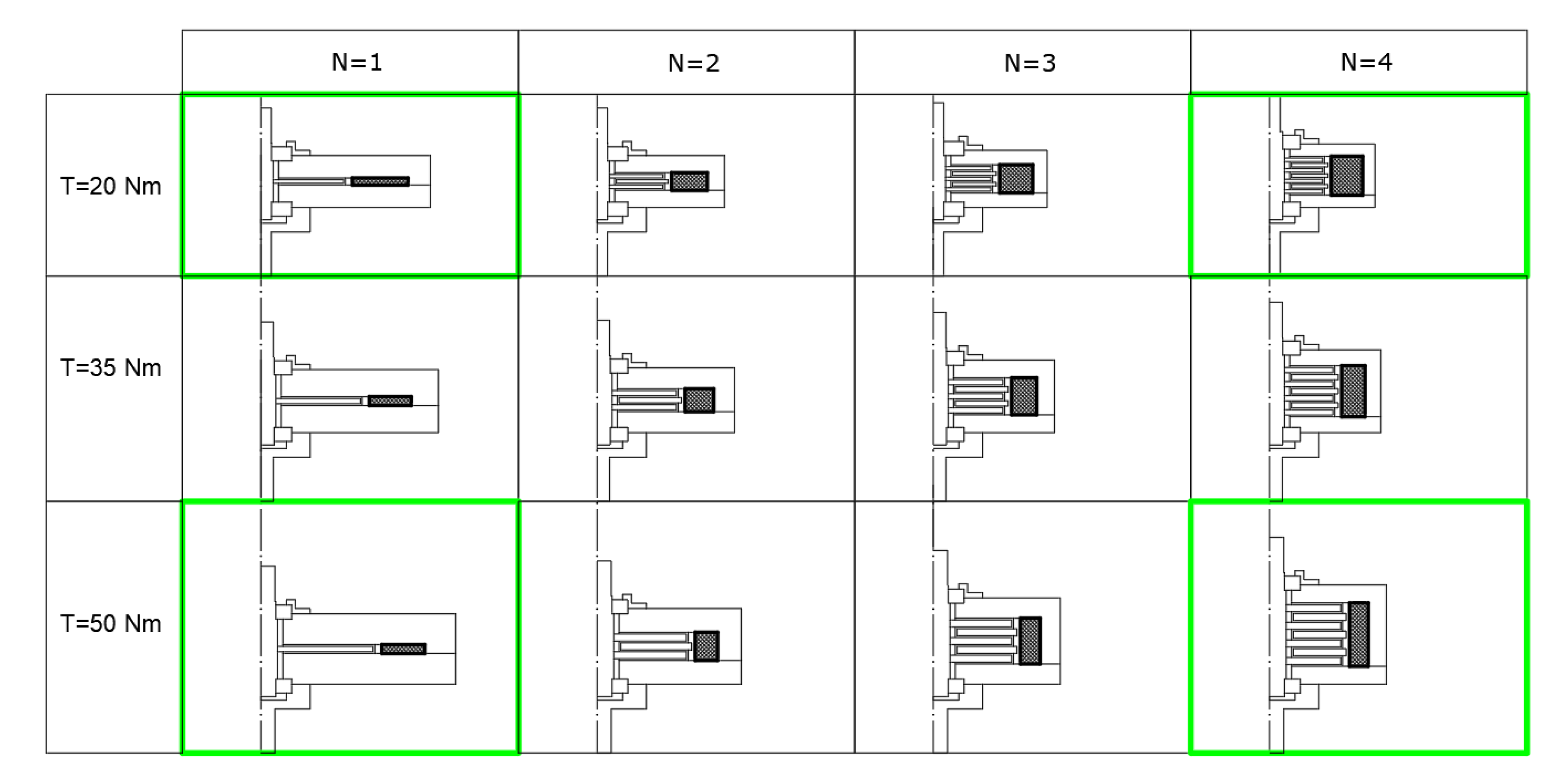
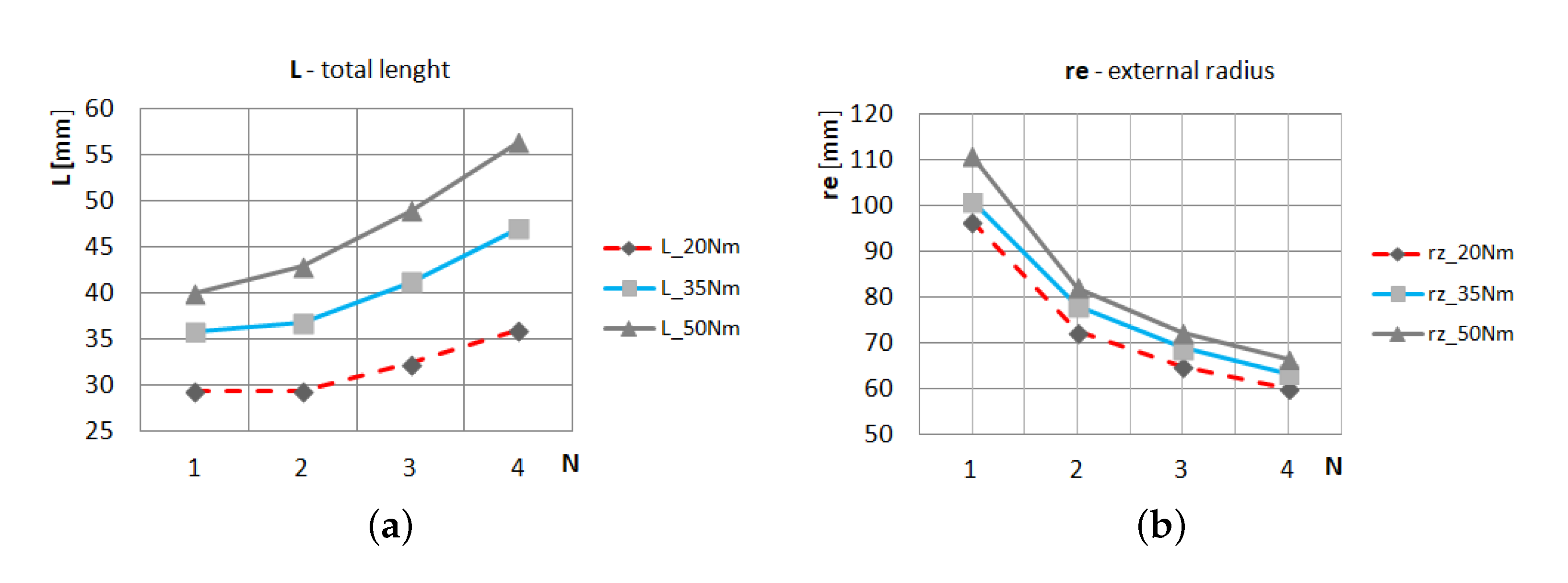
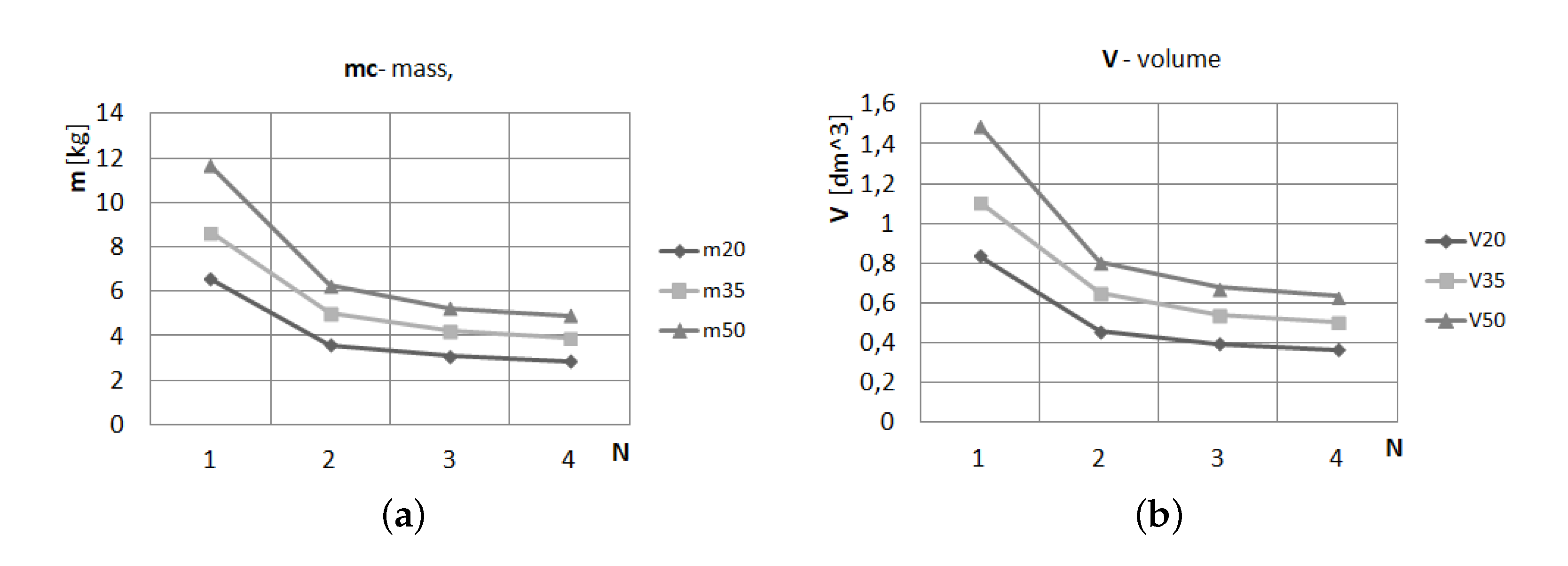
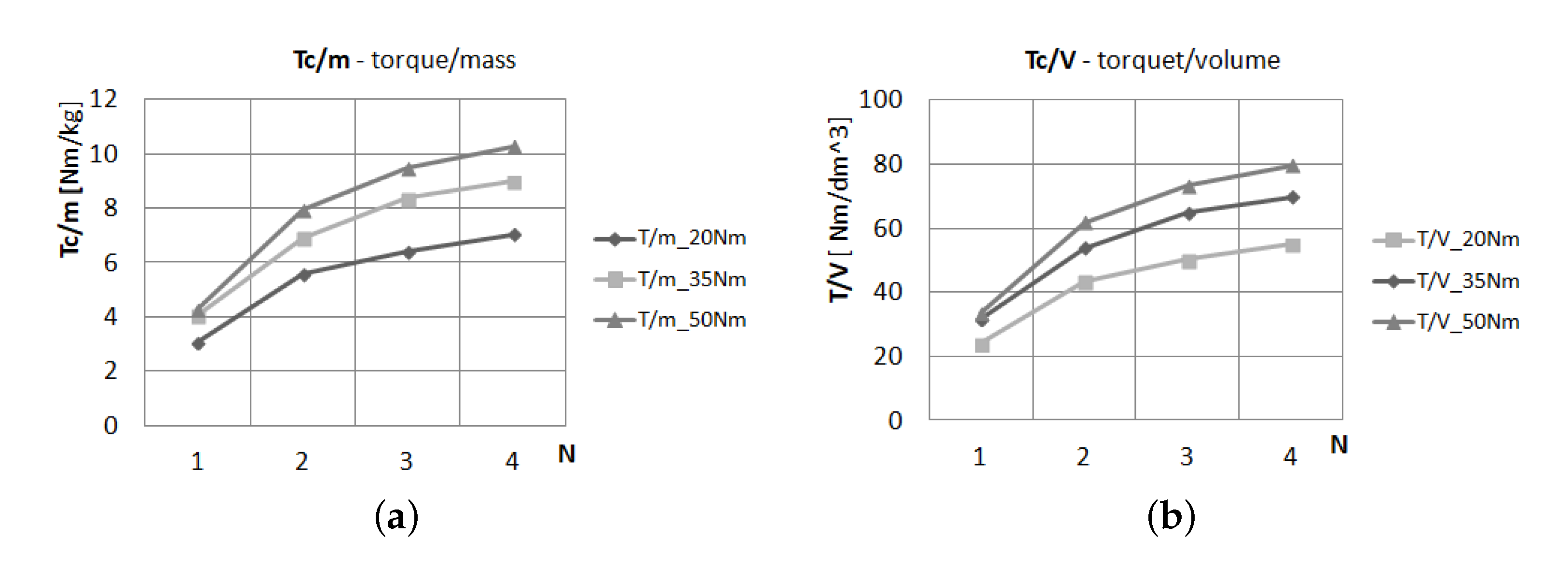
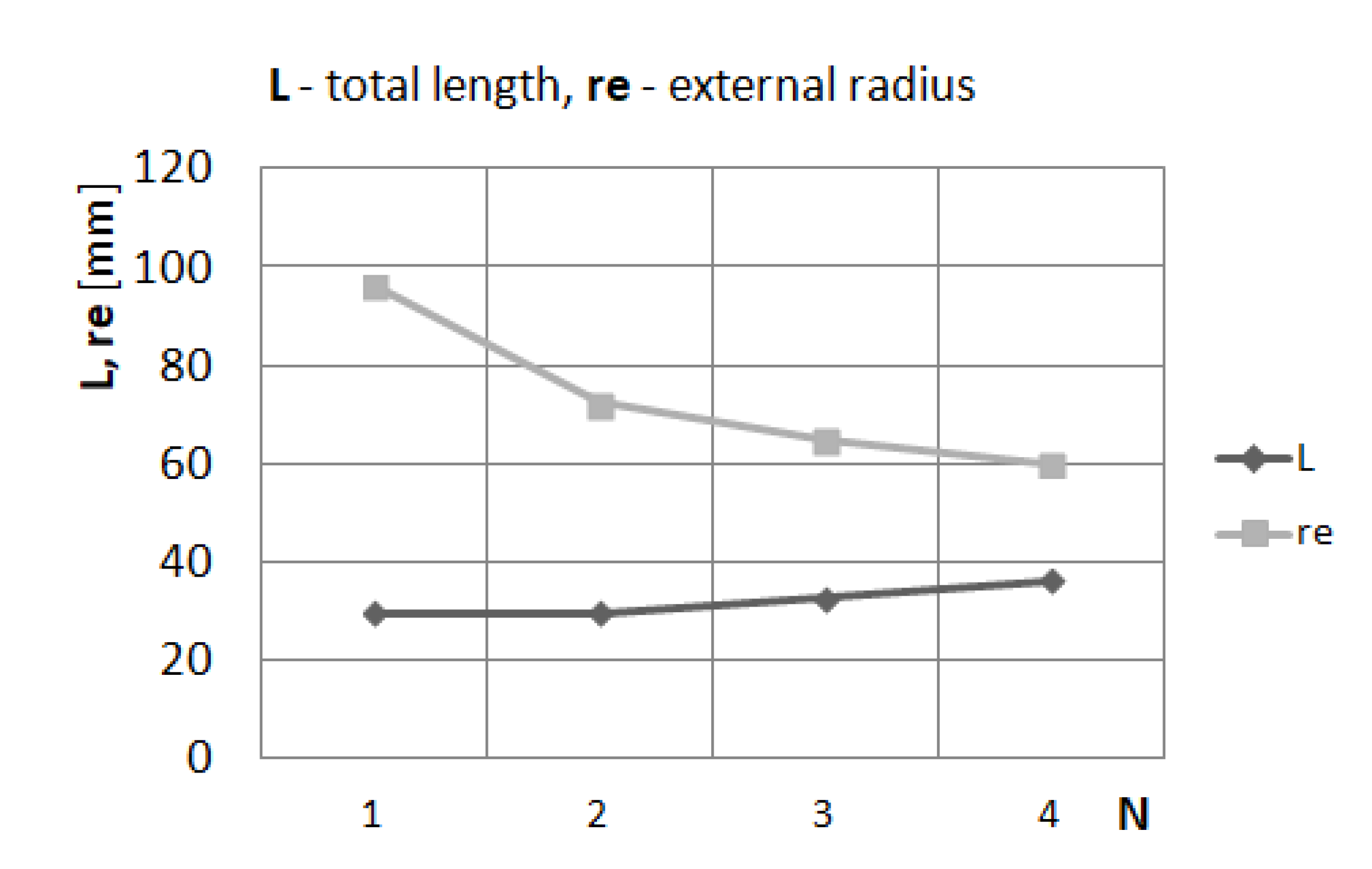

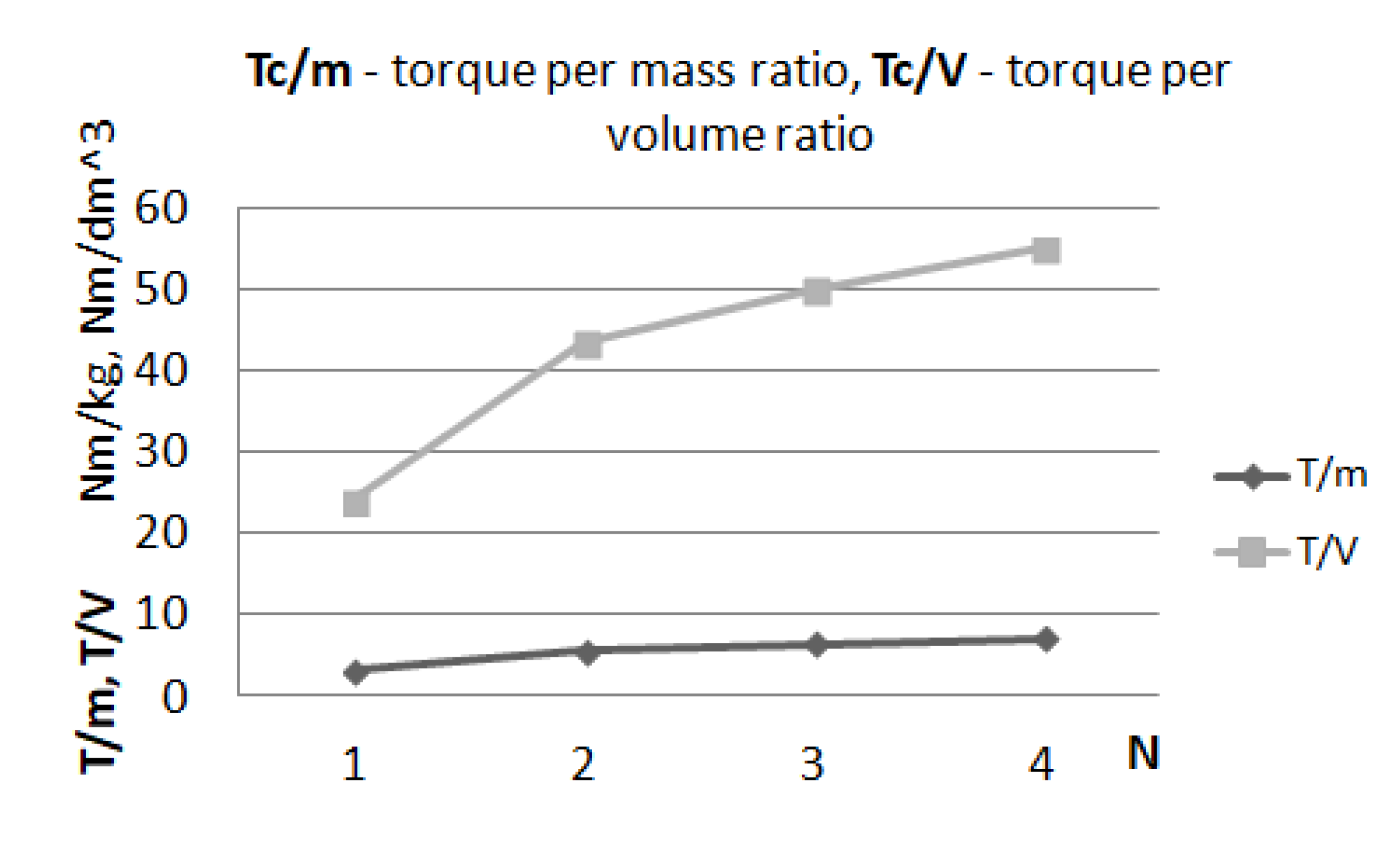
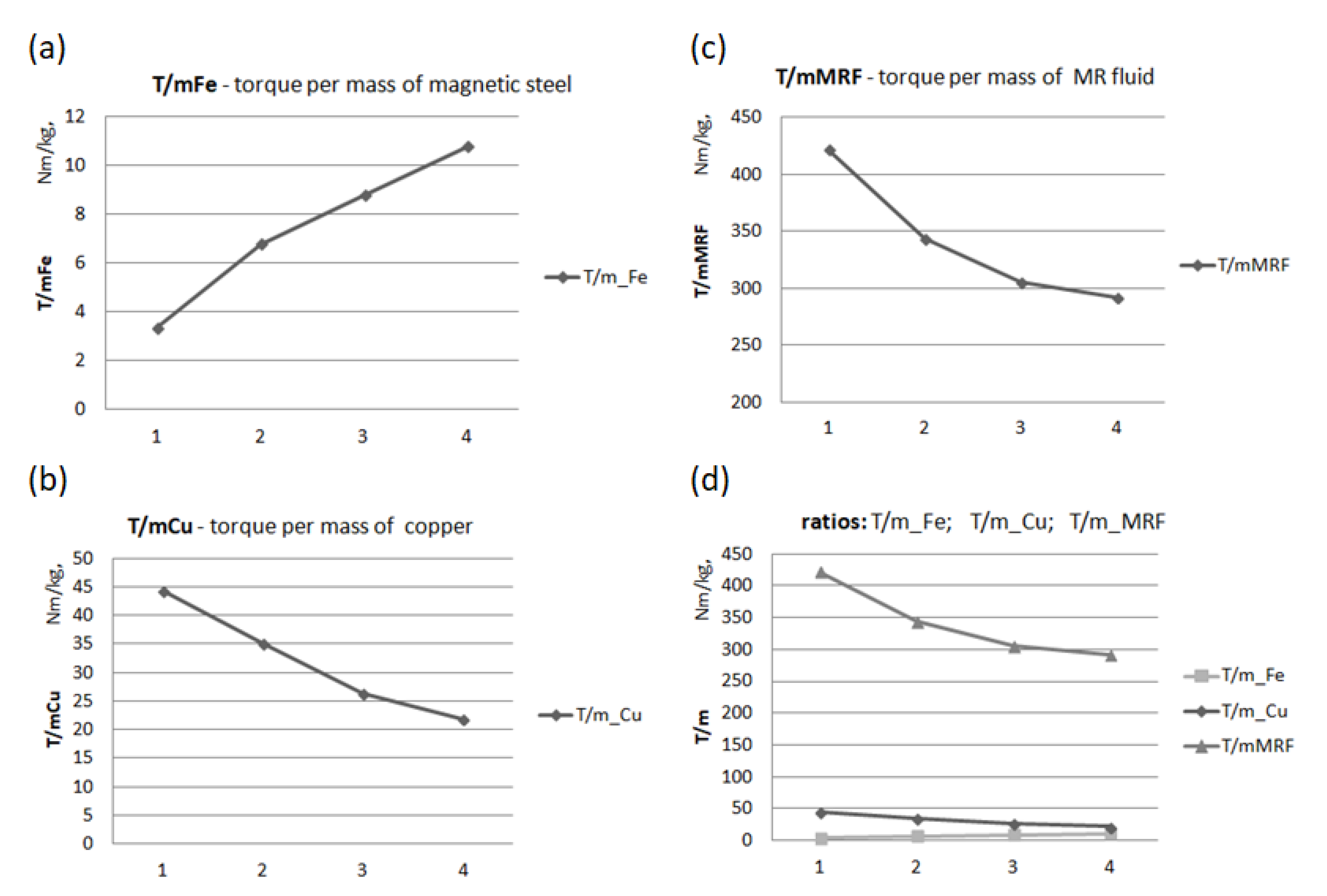

| var. 1 | var. 2 | var. 3 | var. 4 | ||
|---|---|---|---|---|---|
| radius of shaft | (mm) | 5.9 | 6.1 | 8 | 8.1 |
| thickness of discs | d (mm) | 2 | 2 | 3 | 4 |
| thickness of MR fluid gap | g (mm) | 1 | 1 | 1 | 1 |
| inner radius of secondary member discs | (mm) | 11 | 12.5 | 13.5 | 13.5 |
| external radius of primary member discs | (mm) | 47 | 30.2 | 63.7 | 40.5 |
| external radius of secondary member discs | (mm) | 50 | 33.2 | 66.7 | 43.5 |
| inner radius of coil | (mm) | 52 | 35.2 | 68.7 | 45.5 |
| external radius of coil | (mm) | 83.5 | 52.9 | 93.1 | 56.1 |
| external length of coil | (mm) | 4 | 22 | 5 | 36 |
| thickness of cover and cylinder yoke | Y (mm) | 12.7 | 7 | 17.5 | 10.2 |
| number of coil turns | z (-) | 364 | 1364 | 367 | 1363 |
| yoke factor | (-) | 1.259 | 1.176 | 1.270 | 1.176 |
| total magnetomotive force | (A) | 173.6 | 347.3 | 520.9 | 694.5 |
| external radius of magnetic circuit | (mm) | 96.2 | 59.9 | 110.6 | 66.3 |
| external length of magnetic circuit | (mm) | 29.4 | 36 | 40 | 56.4 |
Publisher’s Note: MDPI stays neutral with regard to jurisdictional claims in published maps and institutional affiliations. |
© 2021 by the authors. Licensee MDPI, Basel, Switzerland. This article is an open access article distributed under the terms and conditions of the Creative Commons Attribution (CC BY) license (https://creativecommons.org/licenses/by/4.0/).
Share and Cite
Kluszczyński, K.; Pilch, Z. The Choice of the Optimal Number of Discs in an MR Clutch from the Viewpoint of Different Criteria and Constraints. Energies 2021, 14, 6888. https://doi.org/10.3390/en14216888
Kluszczyński K, Pilch Z. The Choice of the Optimal Number of Discs in an MR Clutch from the Viewpoint of Different Criteria and Constraints. Energies. 2021; 14(21):6888. https://doi.org/10.3390/en14216888
Chicago/Turabian StyleKluszczyński, Krzysztof, and Zbigniew Pilch. 2021. "The Choice of the Optimal Number of Discs in an MR Clutch from the Viewpoint of Different Criteria and Constraints" Energies 14, no. 21: 6888. https://doi.org/10.3390/en14216888
APA StyleKluszczyński, K., & Pilch, Z. (2021). The Choice of the Optimal Number of Discs in an MR Clutch from the Viewpoint of Different Criteria and Constraints. Energies, 14(21), 6888. https://doi.org/10.3390/en14216888







